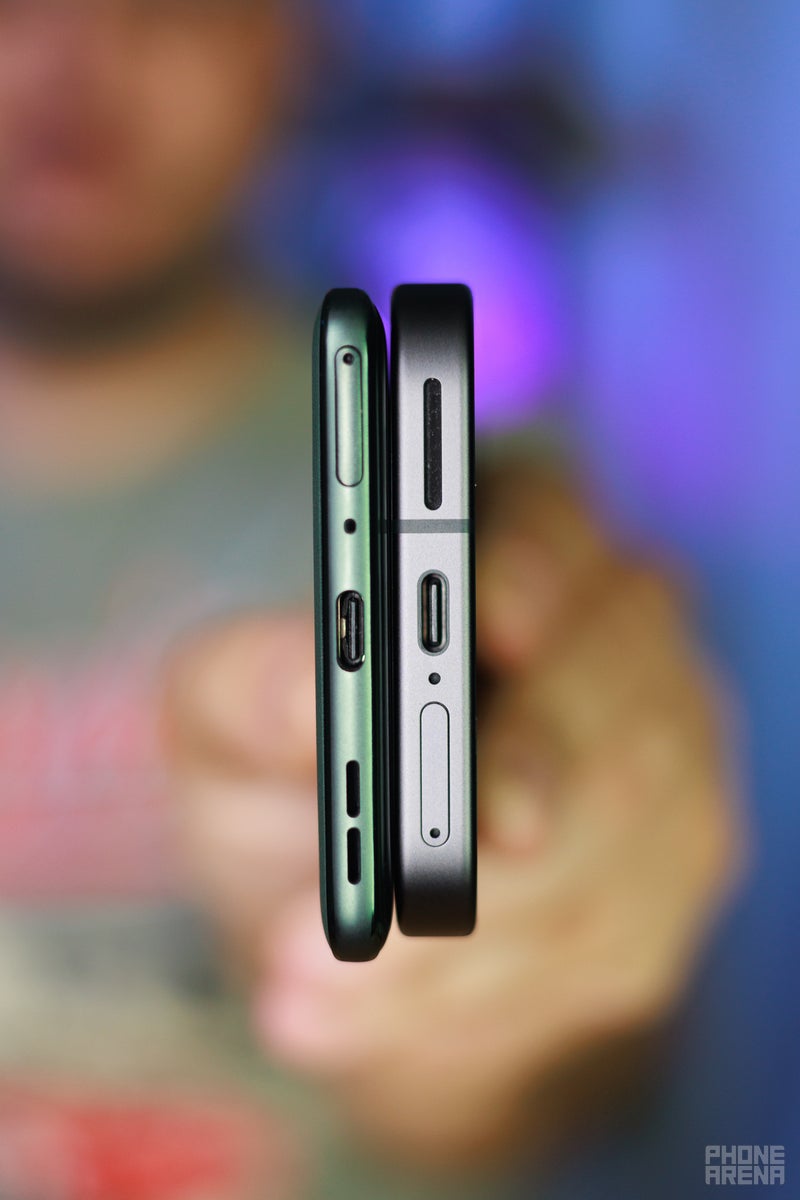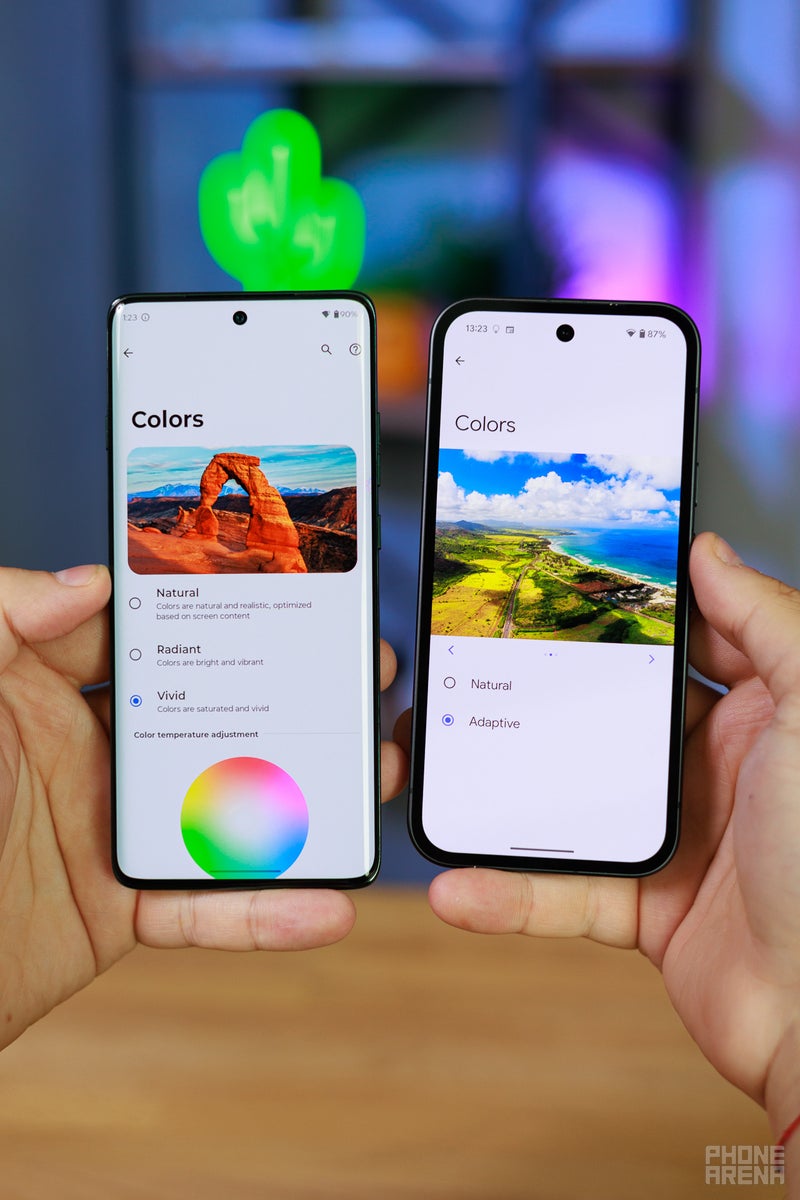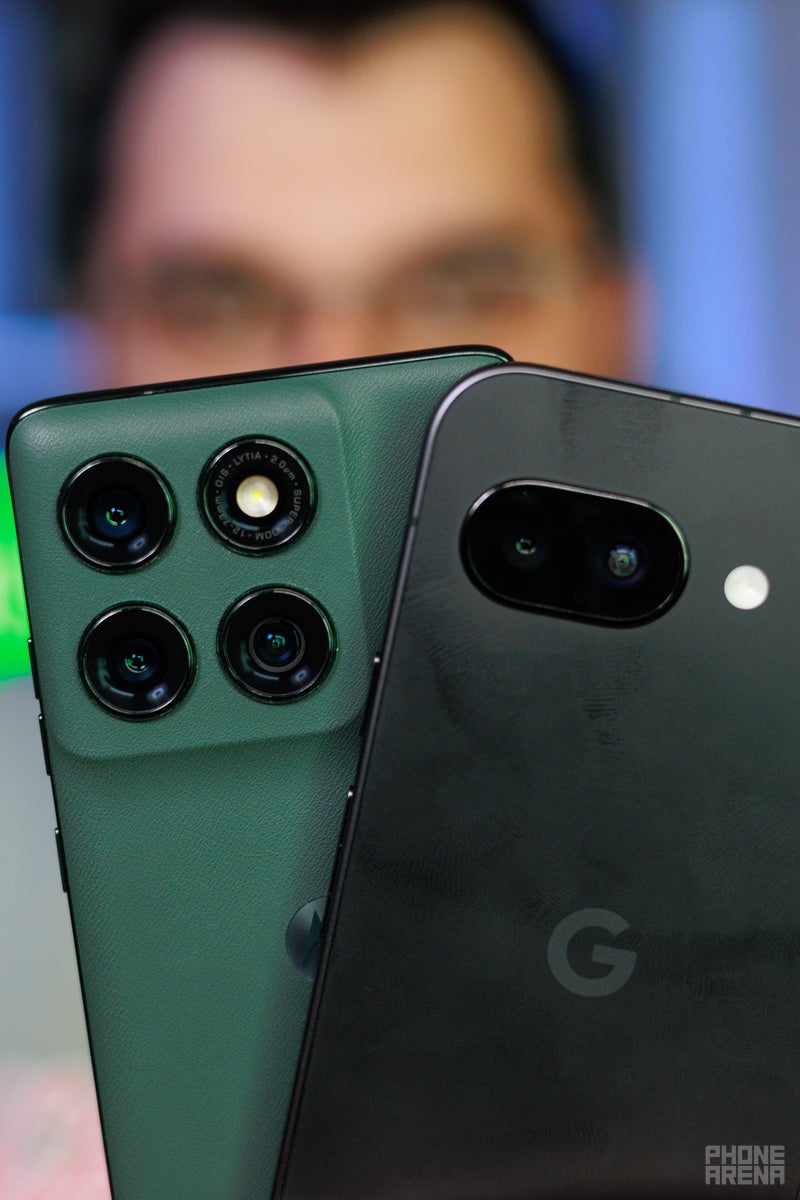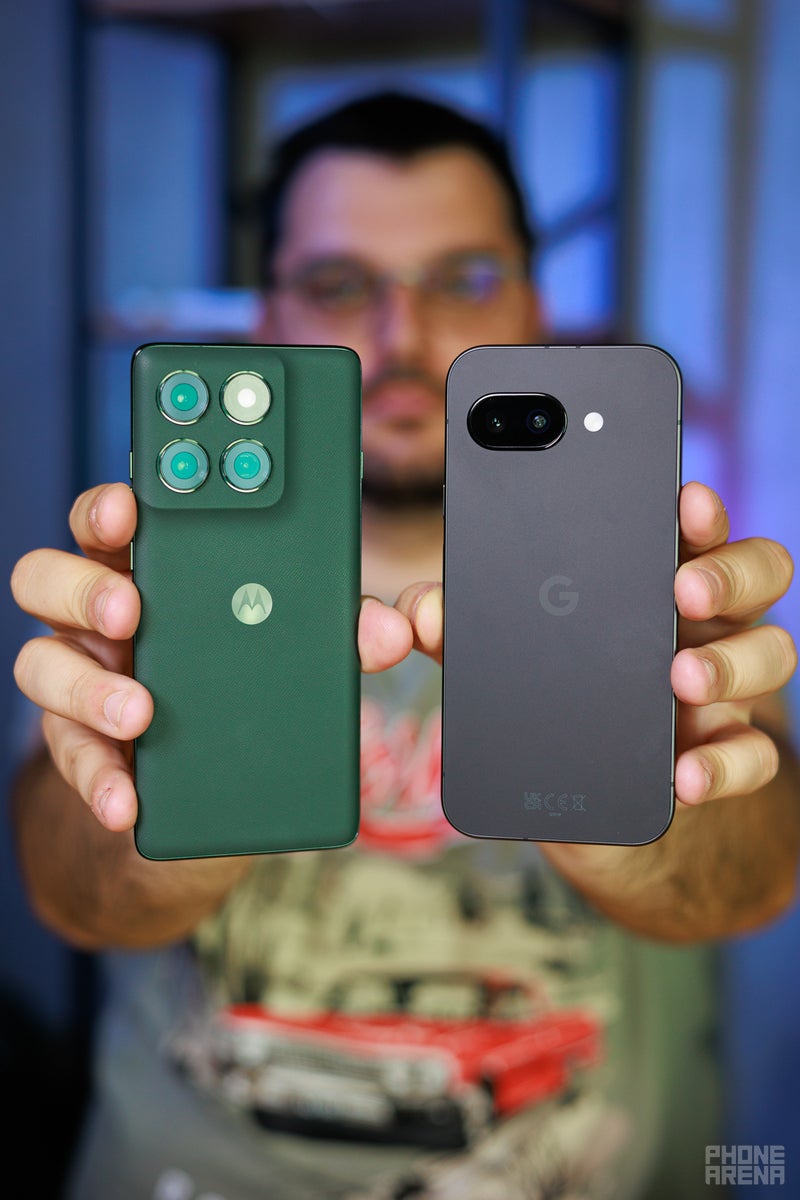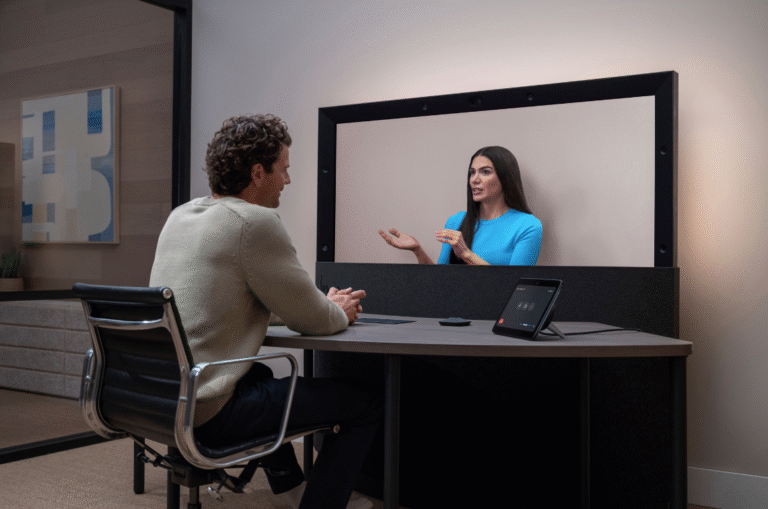Motorola Edge (2025) vs Google Pixel 9a: Is a stunning design worth the trade-offs?
Intro
It’s officially mid-range battle season, everyone.
In one corner, we have Motorola’s latest Edge (2025), which boasts a stunning design with a respectable triple camera and many AI features on board. It starts at $550 and comes with 256GB of slow storage.
In the other corner, Google’s small but mighty Pixel 9a excels with a faster chip, more capable camera, and much better battery life. This one starts at $500 for 128GB of faster storage.
Both are vying for the coveted spot in your pocket. Which to pick?
| PHONE1 | PHONE2 |
|---|---|
| Larger but lighter and thinner phone with exquisite design | Smaller and thicker with plainer design |
| 6.7-inch OLED display w/ 120Hz | 6.3-inch 120Hz OLED display |
| Thinner bezels | Much thicker bezels |
| Better resistance (IP68/69, MIL-STD-810G) | Just IP68 water and dust resistance |
| Dedicated AI Key | No extra buttons available |
| Single color option (Deep Forest) | Obsidian, Porcelain, Iris, Peony colors available |
| MediaTek 7400 chipset, 4nm | Google Tensor G4, 4nm |
| 256GB UFS 2.2 storage in the base version | 128GB UFS 3.1 storage in the base version |
| 50MP main + 50MP ultra + 10MP telephoto cameras | 48MP main + 13MP ultrawide cameras |
| 50MP front camera | 13MP front camera |
| 5200 mAh battery | 5100 mAh battery |
| 68W wired, 15W wireless charging | 23W wired, 7.5W wireless charging |
| $550 starting price | $499 starting price3 |
Table of Contents:
Design and Display Quality
One’s Miss Universe, the other’s an ugly duckling minus the happy end
The Google Pixel 9a is an uglier duckling in comparison, with its style slaving to the “function-over-form” mantra and featuring rather forgettable and unimpressive aesthetics. It is flat on all sides and has some of the thickest bezels we’ve seen in a while. This one isn’t winning any design awards.
Only the gently sloping camera island breaks the flow of the Motorola’s rear. One thing that we should commend Google for is the nearly flush camera assembly: a pretty pleasant surprise in the age of enormous camera islands.
The Moto Edge is definitely the more comfortable phone to use, despite the larger size. That’s due to the curved edges, which give off the impression of the phone being much thinner than it actually is. It’s also lighter at 181 grams against the Pixel’s 186 gr, so certainly nicer to use than the Google mid-ranger.
| Motorola Edge (2025) | Google Pixel 9a |
|---|---|
| Thickness 8 mm |
Thickness 8.9 mm |
| Dimensions 161.2 x 73.1 |
Dimensions 154.7 x 73.2 |
| Weight 181 grams |
Weight 186 grams |
As mentioned, the Moto Edge boasts a vegan leather back and a thin aluminum frame. The Pixel also has an aluminum frame, but an unapologetically plastic back. Both screens are protected by Corning’s Gorilla Glass.
A dedicated AI Key is featured on the left side of the Edge; pressing it opens up the Moto AI suite of Perplexity-aided features. No extra buttons on the Pixel.
In terms of endurance, Motorola makes a clean sweep: the Edge has the highest possible water- and dust-resistance, IP68/69, as well as MIL-STD-810 endurance rating against damage. The Pixel only has an IP68 certification, but that should be more than enough for most people.
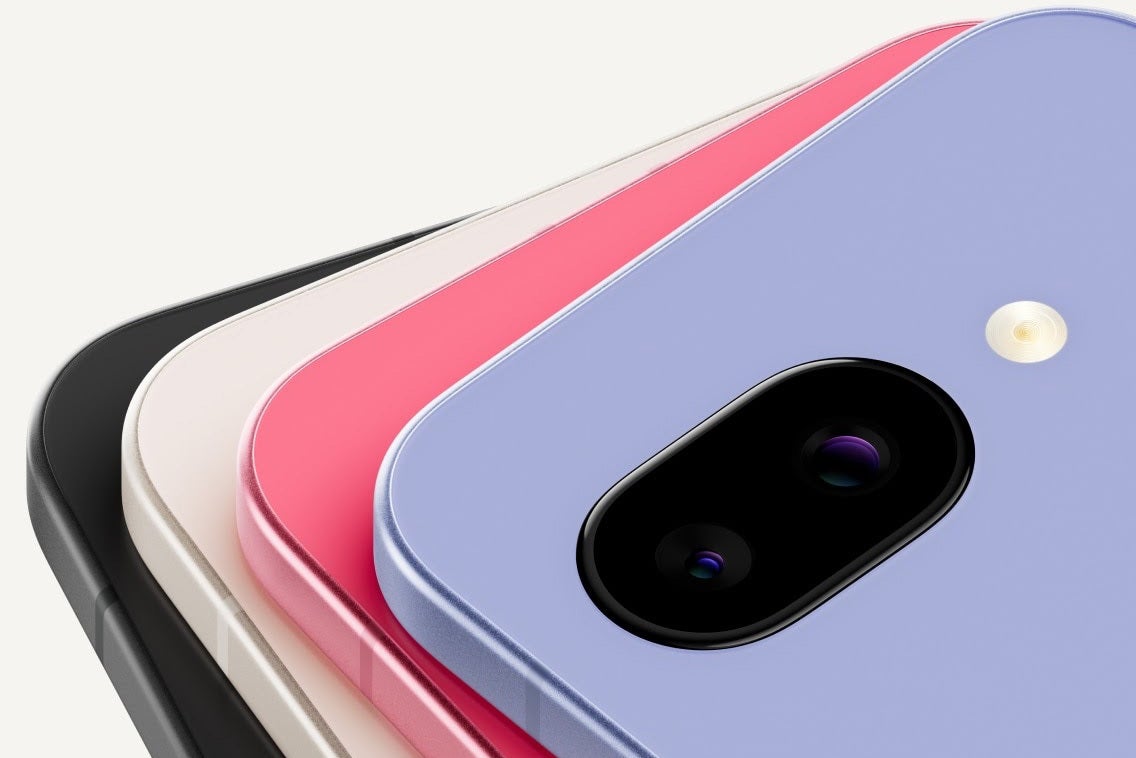
Pixel 9a colors
The Motorola Edge (2025) is available in a single green color, called Deep Forest, while Google brings in a lot more variety: the Pixel 9a is available in Obsidian, Porcelain, Iris, and Peony.
Display Measurements:
In our in-house benchmark tests, the Pixel 9a achieves a much higher peak brightness, but its color accuracy is slightly inferior.
Both have in-display fingerprint scanners, which are mostly similar in accuracy and speed.
Performance and Software
Triumph for the Pixel 9a

The Dimensity 7400 loses to the Tensor G4 (Image by PhoneArena)
The MediaTek 7400 chip ticks inside the Motorola Edge (2025), and by all means, it’s a very humble chip that fails to impress in anything. Can’t really compete against the flagship-grade Tensor G4 inside the Pixel.
| Motorola Edge (2025) | Google Pixel 9a |
|---|---|
| Chip MediaTek Dimensity 7400 |
Chip Google Tensor G4 |
| Process 4nm |
Process 4nm |
| RAM, Storage 8/256GB UFS 2.2 storage |
RAM, Storage 8/128GB 8/256GB LPDDR5X |
The Pixel totally dominates the Motorola in terms of overall performance.
CPU Performance Benchmarks:
In our Geekbench 6 benchmarks, the Edge fails to make a dent on the Pixel’s dominance in both single- and multi-core tests.
The 3DMark graphics benchmark reveals an even wider rift in performance between the two phones: the Pixel dominates the graphics tests, leaving the Moto Edge far behind and establishing itself as the mid-range phone for gamers to consider.
There’s 8GB of RAM on both phones. The Motorola comes with 256GB of UFS 2.2 storage, while the Pixel 9a boasts 128GB of UFS 3.1 storage in the base version. Which to get: a large pool of slow storage, or a small pool of fast storage? You decide, but for regular usage, the extra storage space might be useful.
Camera
This dual camera performs better
The Motorola Edge (2025) comes with three cameras at the back; it has gained a proper telephoto in comparison with its predecessor. The main, ultrawide, and selfie cameras use 50MP sensors, while the telephoto is a 10MP one with 3X optical zoom.
Meanwhile, the Pixel 9a is less impressive in terms of hardware, with a 48MP main and a 13MP ultrawide camera. However, it successfully beats the Motorola in our in-house camera test, which uses controlled scenes to gauge the capabilities of each camera.
PhoneArena Camera Score:
The Pixel achieves a total score of 134 points, which is enough to beat the Moto Edge’s 130 points. The Pixel dominates in the still photo test, with the capabilities of the two phones mostly evened out in the video-recording test.
Main Camera
Few differences here. The Motorola loses big time in terms of sharpness and detail, while the Pixel 9a beats it in dynamic range as well. The Edge also boasts more saturated colors, which isn’t very true-to-life, but the Pixel’s too gloomy look isn’t ideal, either.
Zoom Quality
At the Motor Edge’s native 3X zoom, sharpness is fine, but we can see oversharpening start to creep in. The Pixel does a better job at its 2X digital zoom shooting mode.
At 8X, which is the maximum zoom for the Pixel, the Motorola Edge delivers slightly better image quality.
Ultra-wide Camera
The Motorola shoots very decent ultrawide shots, with good dynamic range but slightly oversaturated colors, once again. The Pixel is more natural and grounded in reality.
Selfies
Both take good selfies, with decent colors, albeit too heavy on the contrast, but good overall.
Video Quality

Battery Life and Charging
Pixel for the win
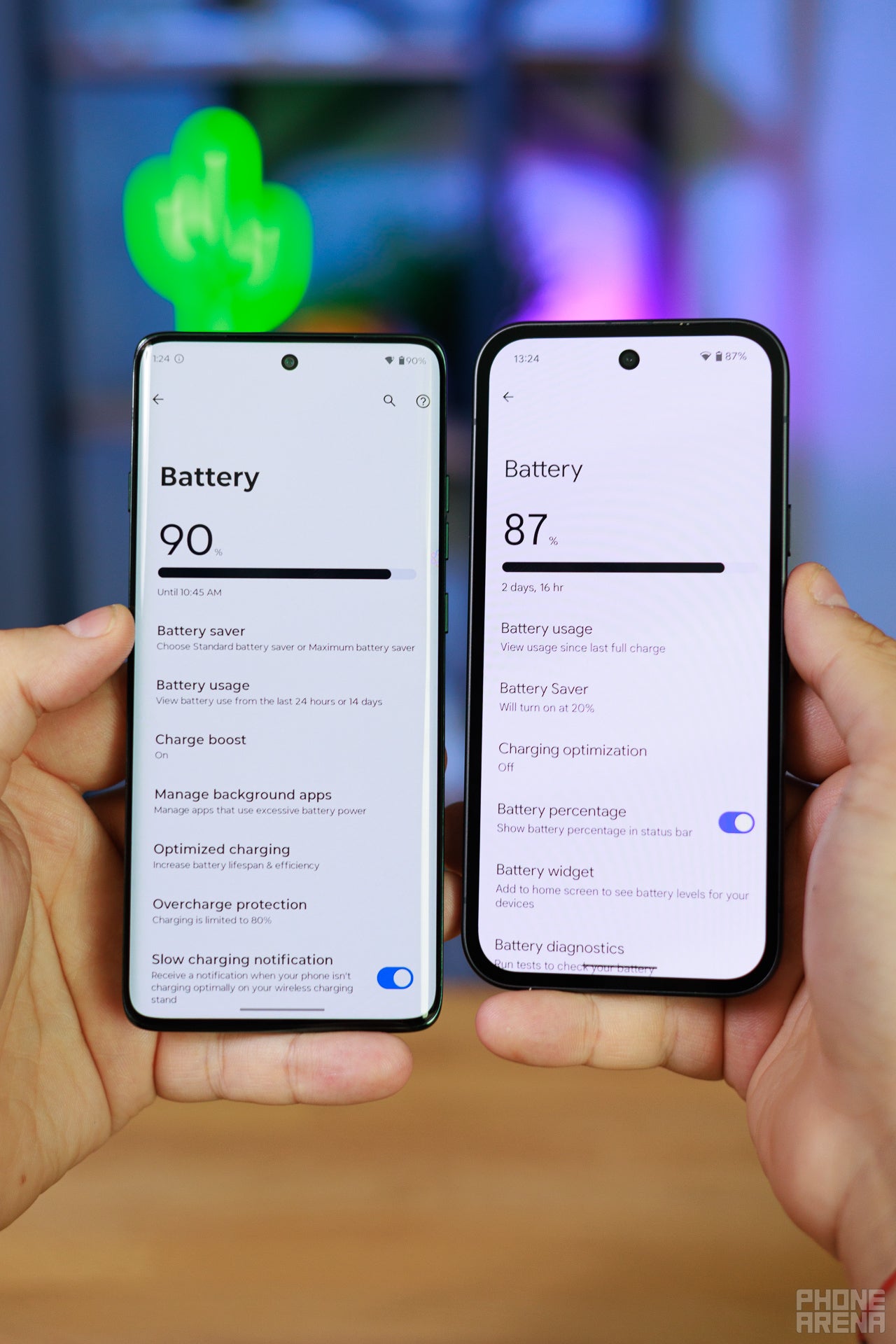
Battery life is the Pixel’s forte (Image by PhoneArena
Coming with a 5,200mAh battery, you’d think that the Motorola Edge would beat the Pixel 9a by a slight margin; after all, it only has a 5,100mAh battery. In reality, however, things are different: it’s the Pixel that totally beats the Motorola phone.
The Google mid-ranger beats the Edge in all three of our custom battery tests, achieving a battery life estimate of eight hours and eleven minutes against the Motorola’s six hours and 45 minutes.
PhoneArena Battery and Charging Test Results:
Charging-wise, it’s the Edge’s turn to beat the Pixel. With its 68W wired charging, it takes just 53 minutes to fully charge. The Pixel 9a takes 102 minutes to charge, so nearly twice as long.
Audio Quality and Haptics
In terms of audio, it’s difficult to point out a winner. Both have issues, but generally sound lively and loud, with no distortion at higher volume levels.
Haptics are okay on both. The vibration is precise, but not too strong, and it lacks the commanding presence of a premium haptic engine like on the iPhone. But, for the price point, the vibration feedback is okay
Specs Comparison
| Moto Edge (2025) | Google Pixel 9a |
|---|---|
| Size and Weight 161.2 x 73.1 x 8 mm 181 gr |
Size and Weight 154.7 x 73.2 x 8.9mm 186 gr |
| Display 6.7-inch OLED 120Hz |
Display 6.3-inch OLED 120Hz |
| Processor MediaTek Dimensity 7400 (4nm) |
Processor Google Tensor G4 (4nm) |
| Versions 8/256GB for $550 |
Versions 8/128GB for $500 8/256GB for $600 |
| Cameras 50MP main, f/1.8 50MP ultra-wide, f/2.0 10MP F2.0 telephoto 3X 50MP front |
Cameras 48MP main, f/1.7 13MP ultra-wide, f/2.2 12MP front |
| Battery 5,200 mAh |
Battery 5,100 mAh |
| Charging 68W wired 15W wireless |
Charging 23W wired 7.5W wireless |
Which one should you buy?
Overall, it’s a toss-up between these two mid-rangers.
The Motorola Edge is more affordable and comes with 256GB of storage, albeit a slower one. It also has a much better design, faster charging, and is more comfortable to use. But it comes with lackluster performance and Motorola’s software support policy means you get only two years of software updates, which isn’t enough.
Meanwhile, the Pixel 9a is a different beast. It’s an unsightly phone with crude design language, but aces just about any major area, like battery life, performance, battery life, and display brightness. It’s also a bit more affordable, starting at $499 for 128GB, but an extra $100 will get you 256GB of storage that’s faster than the one on the Moto Edge.
Overall, if you focus on the looks alone, get the Motorola Edge (2025). In any other case, it’s the Pixel 9a‘s world we’re living in.



